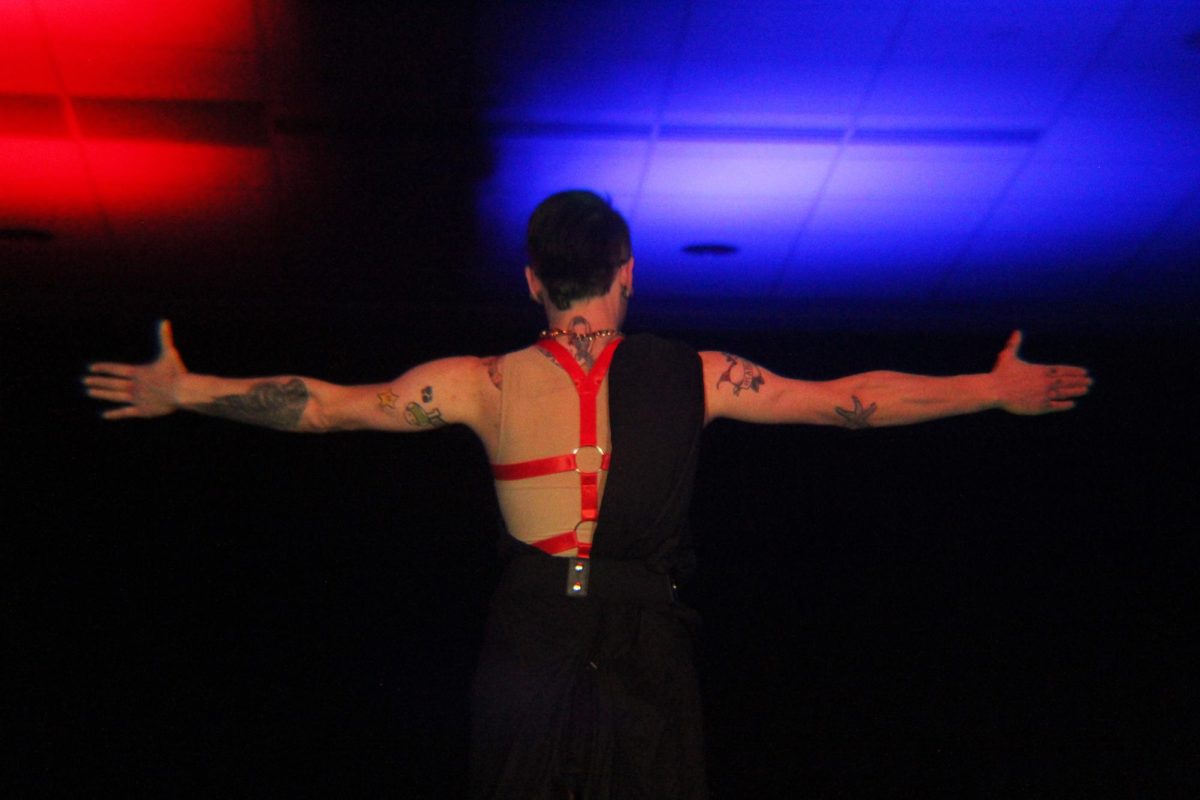UW-Platteville’s Alliance held the 15th annual Rainbow Rave conference and drag show on Nov. 2.
The conference, held in the Wisconsin Room of the Markee Pioneer Student Center, consisted of several speakers discussing different topics about queer history. Dr. Swiderski started the conference off with a presentation about the medicalization of queerness and discussed how hysteria and queerness were thought to be closely related. In the 19th century, many medical doctors believed in the theory of “inversion,” or having the soul of the opposite sex. If someone was inverted, they would experience same-sex attraction. Queer men were thought to be “as hysterical as women” because they supposedly had a female soul.
Jak Kielpikowski discussed queer history as it pertains to several different wars. With the men on the battlefield and women at home, both sexes found themselves experiencing something they never had before. Women worked and earned their own paychecks, and men found themselves forming “deeply intimate” bonds with each other.
Evan Niederwerfer explained queer history during World War II. Many gay men were dishonorably discharged from the military during this period and haven’t been able to apply for an honorable discharge until recently. Many gay people were also killed in the Holocaust.
Nat Poeschel examined the history of pirates and their queer undertones. It is hard to determine if pirates had queer relationships or not due to a lack of historical record, but things like the practice of matelotage, or the practice of economic partnerships, blur the lines between platonic relationships and romantic ones.
Eli Buikema talked about several queer artists throughout history. A common theme for queer artists Eli discussed was the depiction of same-sex relationships or a focus on subjects that are the same gender as the artist.
To conclude the conference, Annebelle Stephen held “gay boot camp,” otherwise known as what it really means to be queer. She emphasized that it is perfectly okay to experiment with one’s gender or sexuality without changing labels, and vice versa. The evolution of the pride flag was also discussed.
The drag show was held later that evening at 7 p.m. in Velzy Commons. It featured six performers with two performances each, plus an intermission by Fusion X. Performers included Anna Mae, Ja’Nyiah Monet Diamond Banxz, Lil NaStalgia, Misti Meaner, and Ramona Ryot.
The theme of the drag show was “Gods, Monsters and Mythical Beasts.” Fitting with the theme, several drag performers dressed up as different mythical figures.




